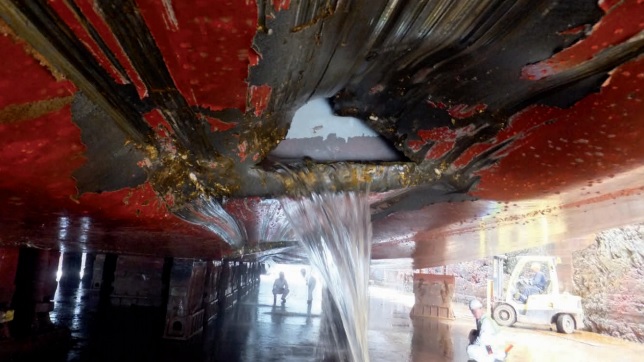In its Safety Digest, UK MAIB describes an incident of hull damage of a ro-ro ferry, highlighting the importance of having a passage planning, even when crews are familiar with a route, as well as of using correctly ECDIS as an aid to navigation.
The incident
During its normal daily service, the ferry was approaching harbour at its full sea speed of about 20kts via a particularly narrow channel. It was mid-afternoon, the weather was fine, sea calm, visibility good and it was low water on a spring tide. The unusual tidal conditions in the area meant that there was about 3kts of tidal stream setting the ship off course to port even though it was low water.
The master was very familiar with the route and was using the visual leading transit marks for the harbour approach as the primary means of positional awareness. The chief officer was also on the bridge as well as the OOW and a helmsman, who was steering by hand. The ship was fitted with an ECDIS system and the crew were certified for ‘paperless’ navigation. The ECDIS safety contour had not been adjusted for the local conditions and, although the cross-track distance (XTD) settings were appropriate, the audible alarm had been switched off.
As the ferry proceeded down the channel, the master observed visually that it was slightly to port of the intended track and made a succession of 2° heading alterations to starboard; however, these adjustments were insufficient to regain track and the ferry raked over a charted, rocky pinnacle. A heavy, shuddering vibration was felt throughout the ship as the outer hull was damaged along most of its length.
The hull was breached in several places but the subsequent flooding was contained in the double-bottom void spaces. The master thought that the vibration had been the result of the vessel’s propeller or rudder picking up some fishing pots, and instructed the OOW to look astern. Nothing was seen. No alarms sounded on the bridge or in the engine control room and the ship responded normally to wheel and engine orders as the propellers and rudders had not been struck.
The crew took no immediate action to identify or assess for damage and the vessel proceeded to its berth as planned. A subsequent, pre-planned dive survey soon found the hull damage.
Lessons learned
off. Had the safety contour been adjusted correctly, it would have been apparent that the channel was not safely navigable at low water. Equally, when the vessel passed outside the XTD, the alarm could have alerted the crew to danger. Under all conditions of navigation, including pilotage, it is important to ensure that ECDIS is correctly used.





























































